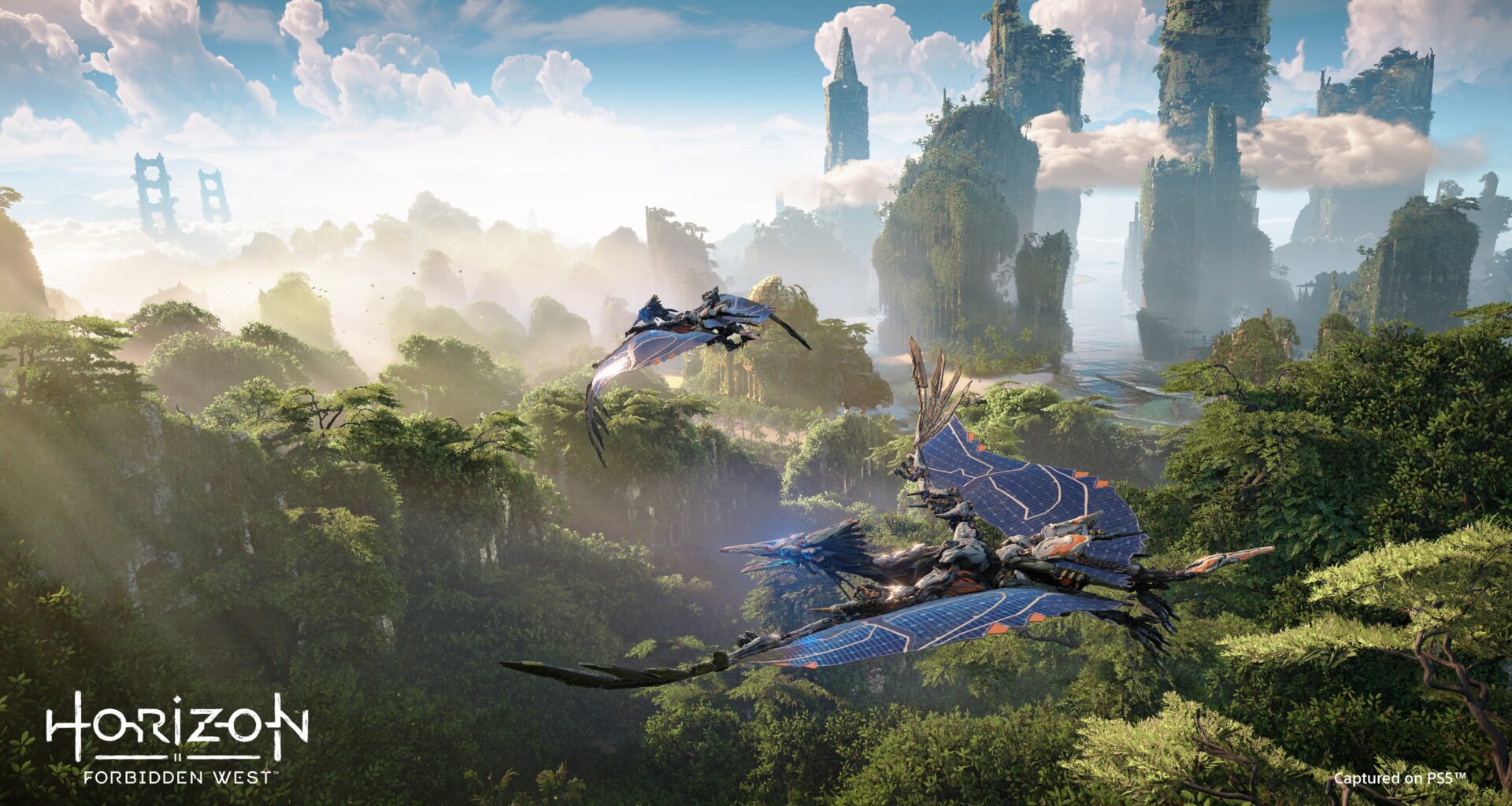I’ve been putting in a good chunk of hours into my PS5 recently making my way through one of the best games of the year, Horizon: Forbidden West. It’s a worthy successor to 2017’s Horizon: Zero Dawn, building on its refreshingly original story1 while layering on multitudes of new gameplay systems onto an established foundation. Sure, it’s a lot more of the same—sometimes overwhelmingly so—but that’s kinda what fans want out of sequels.
(Spoilers to Horizon: Zero Dawn to follow, though if this sounds intriguing, definitely play through the game yourself)
The Horizon series is rightfully praised for its gameplay mechanics and scenic details, but what really makes the games stand out are their stories and the attention paid to worldbuilding. When Horizon: Zero Dawn was initially unveiled, the juxtaposition of its characters in tribal outfits and hunting gear, against animal-esque machines with metal limbs and flashing LEDs, made for immediate intrigue. The arc of that game revolved around solving this central mystery, of why a human from the hunter-gatherer age coexists with technology from science fiction. The answer turned out to be a familiar story of a post-apocalyptic world, with a twist: to absurdly simplify, humanity was mostly wiped out due to AI research gone amok; the survivors lost all technological advancements for the last few thousand years; yet, the AIs continued to autonomously produce robots, erroneously but also for more malevolent purposes.
For open-world games, setting up the story to follow after the collapse of a bygone golden era—in this case, after societal collapse triggered from climate change in the near-future—works really well in aligning gameplay elements to worldbuilding. Granted, other genres of games and even some movies also leverage this trope, but as open worlds emphasize adventure and exploration, littering the map with ruins and abandoned facilities and artifacts thematically fits the genre. Developers then can layer on logs, audio clips, and items to further build atmosphere, invoking a faux sense of nostalgia for what that past could have been. Thus, when players explore this open world, they’re rewarded with both the promise of treasure and supplemental storytelling.
With a story occurring after a cataclysmic event, gameplay objectives and items also connect naturally. Advanced civilizations would have produced weapons, armor, and artifacts beyond what people now can make, so there’s a convenient set of quests to fetch these mystical items, often just to improve the player’s inventory and take on stronger enemies. Technology—now actually indistinguishable from magic—gives plenty of outs to create McGuffins for the player to retrieve, trade, guard, or accompany from one place to another. This setup so common in fantasy and pseudo-fantasy settings that it’s basically the default—how many times has a protagonist had to fetch an Exacalibur, a Masamune, or the One Ring? By contrast, it’s harder to pull off in sci-fi settings, as tech is assumed to advance over time so something like an apocalypse is necessary to reset the technological slate.
Anyway, Horizon’s timeline and degree of “starting from zero” is fairly unique, at least in gaming, in that it starts with a sci-fi premise (the advanced machines), but transitions into a more fantasy-based setup with civilization reverting back to hunter-gatherer societies. In fact, world is divided up into various tribes, each with their own rituals and ceremonies and beliefs which are largely formed by the geological peculiarities of where that group of humans settled, or chance events that evolve into founding stories for the village. In other words, through the passage of time and oral histories, history blooms into mythology.
The striking appearance and behaviors of characters in Horizon are largely a result of how these myths are based on our near future, with fantastic and creative juxtapositions throughout. Some warriors’ armor, for instance, is a blend of traditional leather and weaves but include tough metal plates salvaged from defeated machinery. Some of the game’s priests foretell prophecies that are based on obvious propaganda videos from centuries past. Some machines are feared, yet others worshipped; it hammers home the point that the difference in technological prowess is so vast that the game’s primitive people don’t see them as just magical, but divine.
The end result is a fun “what if?” exploration of how myths get created and manifest. I don’t get the sense that the developers are trying to say anything overtly political or controversial with how they told their story and built the world of Horizon. Well…other than reminding the player, repeatedly, that all this came about because of a poorly-handled climate crisis; somehow, they managed to tie global warming in with killer AI robots.
It’s sad to note, but games are even worse than movies when it comes to milking franchises and churning out sequels; original IP like Horizon are a cause for celebration.↩


